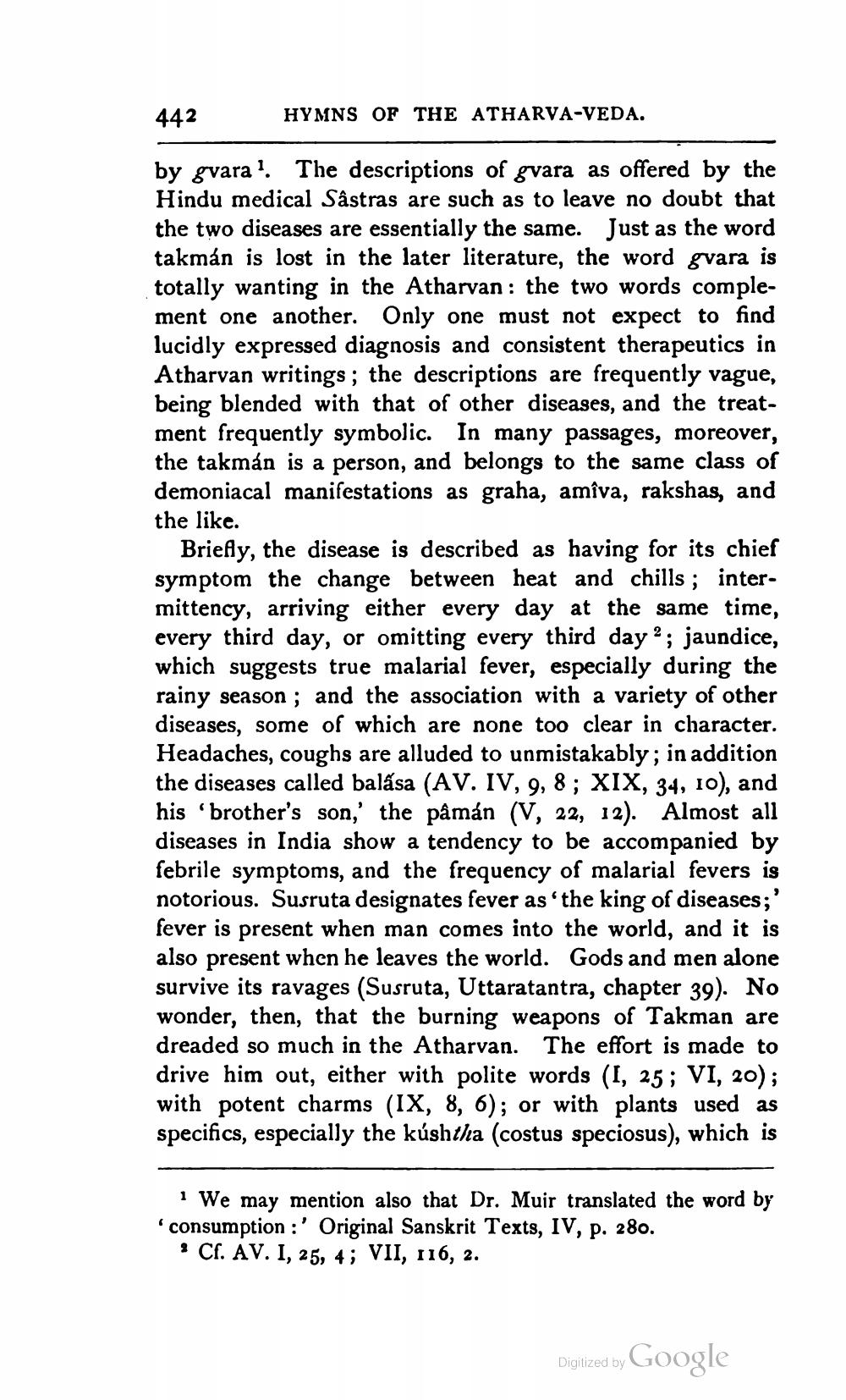________________
442
HYMNS OF THE ATHARVA-VEDA.
by gvara'. The descriptions of gvara as offered by the Hindu medical Sâstras are such as to leave no doubt that the two diseases are essentially the same. Just as the word takmán is lost in the later literature, the word gvara is totally wanting in the Atharvan: the two words complement one another. Only one must not expect to find lucidly expressed diagnosis and consistent therapeutics in Atharvan writings; the descriptions are frequently vague, being blended with that of other diseases, and the treatment frequently symbolic. In many passages, moreover, the takmán is a person, and belongs to the same class of demoniacal manifestations as graha, amiva, rakshas, and the like.
Briefly, the disease is described as having for its chief symptom the change between heat and chills ; intermittency, arriving either every day at the same time, every third day, or omitting every third day?; jaundice, which suggests true malarial fever, especially during the rainy season; and the association with a variety of other diseases, some of which are none too clear in character. Headaches, coughs are alluded to unmistakably; in addition the diseases called balása (AV. IV, 9, 8; XIX, 34, 10), and his brother's son,' the pâmán (V, 22, 12). Almost all diseases in India show a tendency to be accompanied by febrile symptoms, and the frequency of malarial fevers is notorious. Susruta designates fever as the king of diseases;' fever is present when man comes into the world, and it is also present when he leaves the world. Gods and men alone survive its ravages (Susruta, Uttaratantra, chapter 39). No wonder, then, that the burning weapons of Takman are dreaded so much in the Atharvan. The effort is made to drive him out, either with polite words (I, 25; VI, 20); with potent charms (IX, 8, 6); or with plants used as specifics, especially the kúshtha (costus speciosus), which is
1 We may mention also that Dr. Muir translated the word by 'consumption :' Original Sanskrit Texts, IV, p. 280.
. Cf. AV. I, 25, 4; VII, 116, 2.
Diglized by Google




